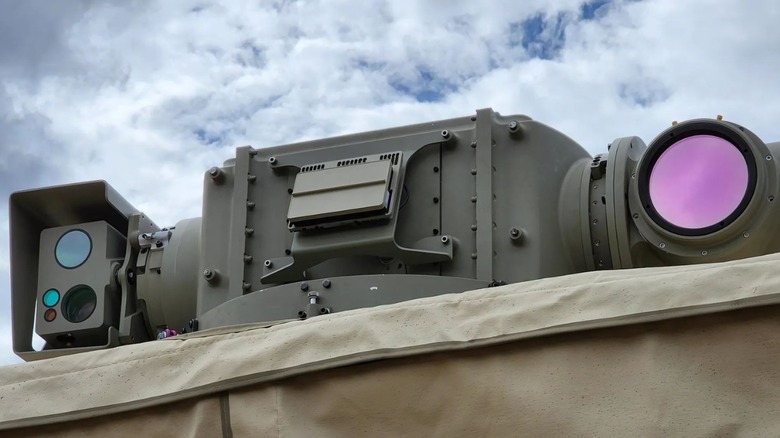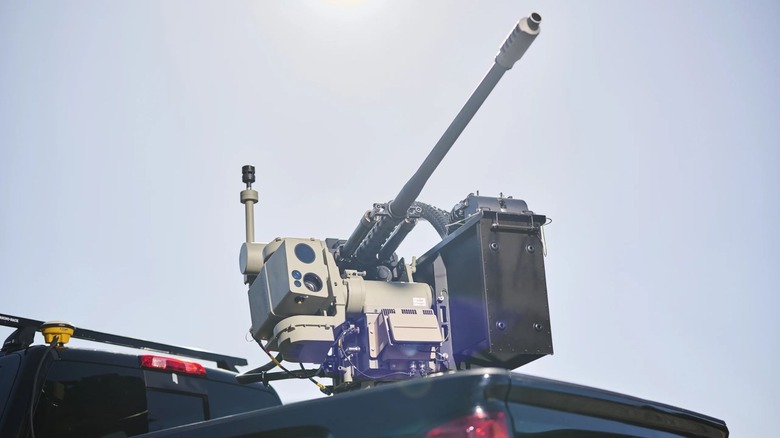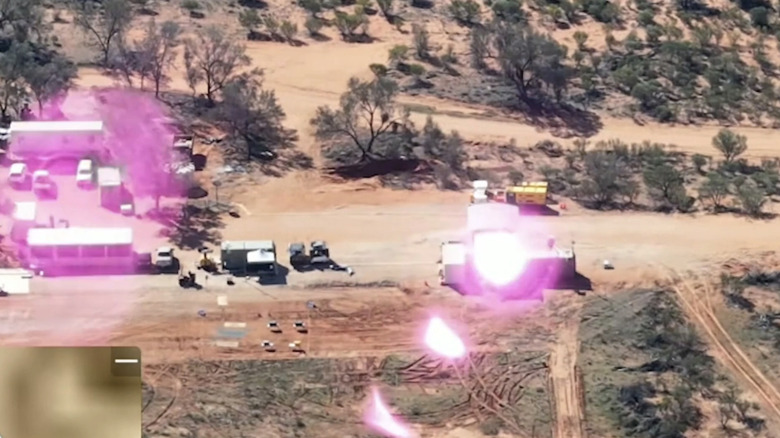Australia's Apollo Laser Can Take Down 200 Drones Using Its Own Power Source
Drones have forever changed modern warfare. From rapid deployment and real-time intelligence gathering, to remote operation and lower maintenance, they've emerged as a cost-effective and multifaceted asset. That also makes them a tangible threat to any country's defenses, and over the years, numerous systems and strategies have popped up to neutralize their danger. The US Department of Defense, for example, is working on the Replicator 2 Project to destroy enemy drones. The latest in the field is the Apollo, a high-energy laser weapon that can target 200 drones in a single shot without requiring an external power supply.
The ability to operate in a mobile format, without requiring a sustained high energy input, makes it an ideal (and lethal) system to combat the risk posed by drones. Developed by Electro Optic Systems (EOS), the 100 kW-class High Energy Laser Weapon (HELW) system has already secured a contract with a NATO nation. Named Apollo, the system's output can be scaled all the way up to 150 kW, and offers 360-degree coverage against unmanned aerial systems (UAS).
"It is designed to defeat Group 1–3 drones and to disrupt their sensors at range," says the Australian company behind Apollo. As mentioned above, it can be deployed standalone or mounted, and can also be integrated with other systems to enhance the anti-drone operations. It appears that EOS' laser-based drone killer is already at the summit. Citing "officials, experts and industry executives," a report by The New York Times notes that Apollo "appears to be the highest-power direct energy system to be sold on the global weapons market."
Solving the critical cost problem
The effective firing range of Apollo is five kilometers (approximately three miles), and it can deliver anywhere between 20 and 30 drone kills per minute. Johannes Pinl, chief of defense security giant MARSS, notes that the kill rate of EOS' Apollo system is "unheard of," and that it will prove to be particularly effective against swarm-based drone attacks. Another crucial advantage of EOS' laser-based anti-drone system is the cost efficiency. It is estimated that the machine would only cost $0.1 per shot.
That puts it in roughly the same league as the Radio Frequency Directed Energy Weapon (RFDEW) being tested by the UK and costs roughly $0.13 per shot. The U.S. Marine Corps is also testing a similar system that relies on high-energy microwaves to destroy drones. For comparison, Ukraine's Gepards anti-drone system relied on shots that incur a bill worth $600 per round. The more effective anti-drone round called AHEAD will balloon the costs to $1,000 per shot. Dr Andreas Schwer, chief at EOS, told a local news outlet that using missiles for neutralizing drones will be even more expensive, putting the cost in the $0.5 million to $2 million per shot ballpark.
Detailing the fundamental architecture of Apollo, he explained that the anti-drone system essentially combines multiple laser beams to elevate their energy output. "It tracks targets very accurately — this is critical — and keeps the laser beam on the target. The light energy typically degrades the drone target in 1-2 seconds," Dr. Schwer was quoted as saying. On a tactical front, he highlighted how lasers can shoot vertically upwards, while other anti-drone systems generally can't.
A game changer for the future of warfare
Laser-based anti-drone systems bring multiple tactical advantages to the battlefield. They don't require any reloading hassles and can work continuously, as long as they get a sustained power supply. In that regard, they fare even better than rail guns; which are destructive, but notoriously power hungry at the same time.
Then there's the speed advantage: The projectile, in this case, travels at the speed of light. That means the only delay is how long it takes a tracking system to identify the target and point the laser gun in the right direction. And as mentioned above, cost per round is their biggest advantage, alongside the logistical ease that comes with deploying laser-based weapons compared to anti-drone missiles.
EOS won't be the only player to test lasers for military applications. Multiple countries are developing their own laser-based weapons, and it seems cost-efficiency is bolstering innovation and rapid uptake of this new breed of weapons. China's Guorong-I is a ground-to-air laser-based system that can reportedly bring down a drone in seconds. Israel's Iron Beam is arguably the most well-known name in the arena: Earlier this year, Israel deployed it in Lebanon, its first reported use of directed-energy weapons (DEWs) in active combat.
Lockheed Martin has developed an even more powerful 300-kW High Energy Laser Scaling Initiative (HELSI) system and delivered it to the U.S. Department of Defense. Japan's Kawasaki Heavy Industries has created a similar laser-based drone killer system that can be mounted on an ATV. Earlier this year, India's Defence Research and Development Organisation (DRDO) also tested the efficacy of its Laser Directed Weapon(DEW) MK-II(A) system against standalone and swarm drones.


